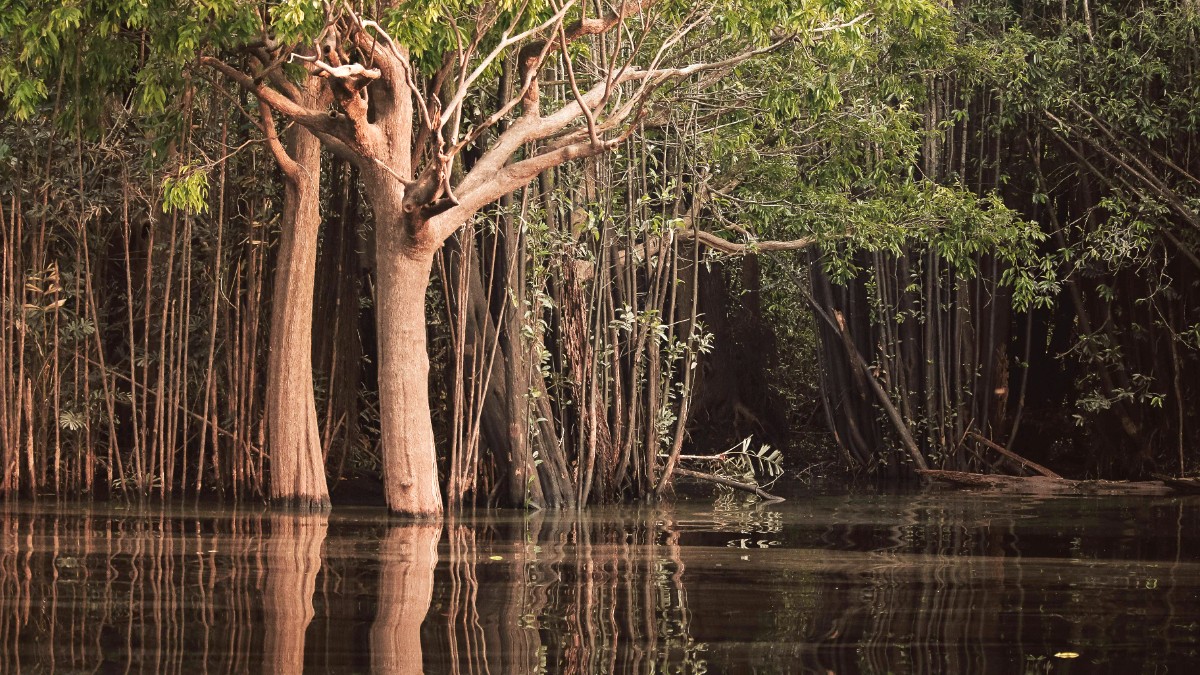
Amazon Basin, Colombia
The first impression of Leticia often includes its intense humidity and the constant sounds of nature mixing with city life. You will see motorcycles everywhere, serving as the main mode of transport. The air hums with tropical insects. The scent of fresh river fish drifts from local eateries. Trees burst with green, even within the urban areas. People move at a relaxed pace, yet the port area buzzes with activity. This immediate immersion into an Amazonian rhythm sets the tone for your adventure.
Leticia sits at the southernmost tip of Colombia, on the Amazon River. This position places it within the Amazon Basin, the world's largest rainforest. The city occupies a low-lying landscape.
The Amazon River dominates the region. It acts as the main highway for commerce and exploration. This blend of urban core and wild jungle makes Leticia a distinctive destination.
Leticia lies within the Amazon Basin. This location means a flat, low-lying landscape, with the Amazon River as its most prominent feature. The city sits on the river's left bank. It forms a natural border with Tabatinga, Brazil, which stretches immediately to its east. Across the river to the south lies Santa Rosa, Peru, located on an island. This tri-border position shapes daily life, culture, and trade.
The Amazon River, often called the "River Sea," is central to the region's existence. It acts as the main transport route, connecting communities and towns. Countless tributaries, small rivers, and flooded forests branch off the main river. These waterways create an intricate network, shaping the ecosystem. During the wet season, the river level rises dramatically, submerging vast areas of forest. This transforms the landscape into a watery world. In the dry season, water recedes, exposing sandbanks and creating new pathways.
Daily temperatures typically range from 24°C (75°F) to 32°C (90°F).
Humidity often exceeds 80%, creating a dense, moist atmosphere.
Expect frequent rainfall, even during the "dry" season, though downpours are more intense in the wet season.
December to May, with river levels rising significantly.
June to November, with river levels dropping and more land exposed.
The landscape beyond the city limits quickly turns into dense, main rainforest. Towering trees form a dense canopy. The forest floor is often muddy. This environment poses unique challenges and offers special rewards for explorers.
During the wet season, the river level rises dramatically, submerging vast areas of forest. This transforms the landscape into a watery world. In the dry season, water recedes, exposing sandbanks and creating new pathways.
This highlights the river's role as a main thoroughfare. The intricate network of waterways shapes the ecosystem and daily life.
Leticia's climate and geography define its unique character as a gateway to the Amazon.
Leticia's history reflects the broader story of the Amazonian frontier. Its origins trace back to the mid-19th century. Early settlements arose from the need for a port on the Amazon River. The city's name comes from a Peruvian soldier who named it after a young woman, signaling its early ties to Peru. The region became a point of contention between Colombia and Peru in the early 20th century. Both nations claimed the territory due to its strategic river access and natural resources.
The "Leticia Incident" or "Leticia War" in the 1930s marked a significant chapter. Peruvian civilians, supported by their government, seized Leticia. This act led to a brief but intense conflict between Colombia and Peru. The League of Nations eventually intervened, returning Leticia to Colombia in 1934. This historical event solidified Colombia's claim to its Amazonian gateway. It also highlighted the region's importance for trade and national sovereignty.
The region became a point of contention between Colombia and Peru in the early 20th century.
The League of Nations eventually intervened, returning Leticia to Colombia in 1934.
This event solidified Colombia's claim to its Amazonian gateway, highlighting its trade importance.
Groups like the Ticuna, Huitoto, and Yagua have lived along the Amazon and its tributaries for centuries. Their history intertwines with the forest. They possess vast knowledge of its plants, animals, and cycles.
Southern Colombia, on the Amazon River, bordering Brazil (Tabatinga) and Peru (Santa Rosa).
Tropical rainforest, hot and humid year-round, with distinct wet and dry seasons.
Easy access to neighboring Tabatinga, Brazil, and Santa Rosa, Peru, for a cross-cultural experience.
People who love unique ecosystems and abundant wildlife viewing opportunities.
Travelers looking for an off-the-beaten-path experience and jungle treks.